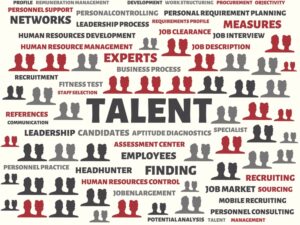 Here’s something that just about everyone in talent acquisition really wants to know: What is it that causes some good people to leave a job, and in turn, what makes others that you consider top talent want to stick around?
Here’s something that just about everyone in talent acquisition really wants to know: What is it that causes some good people to leave a job, and in turn, what makes others that you consider top talent want to stick around?
Retention is at the heart of talent acquisition, because the better job your organization does retaining employees, the less energy you have to put into finding new ones.
This is at the heart of Ceridian‘s new 2017 Pulse of Talent Report, because the theme of the research is the Key Factors for Retaining Top Talent, “a deep dive into why high-performing employees leave, or remain in their jobs.”
In fact, the report on the survey gets to the key question quickly, and its this: Why does talent quit?
Top 5 reasons employees are looking to leave
Here are the top 5 reasons job hunters are looking to leave their current employer, according to the Ceridian research:
- Non-competitive salary;
- Long commute;
- Uninteresting work;
- No opportunities for growth;
- Poor manager relationships.
As the analysis points out:
Salary was a top motivator for respondents to leave their jobs. In fact, just over one in four (27 percent) respondents across North America listed it as a reason for quitting a previous position, while 17 percent listed it as the primary reason for their departure.”
And, the analysis goes on to add this:
While salary might be a sticking point for employees, once the decision is made to leave a job, people tend to take stock of what’s important to them, and while financial stability is significant in the decision-making process, work-life balance (which includes how long people are stuck in traffic) and career growth tend to take greater priority.”
Nearly 40% of high performers are “actively job hunting”
Yes, salary is the big issue that fuels employees — particularly high performing employees — to look for a new job, but once they start looking, other important personal factors enter into their decision-making process.
“While salary creates a baseline for happiness at work, it isn’t everything,” said Lisa Sterling, Chief People Officer at Ceridian, in a press release about the survey. “Organizations looking to retain their most effective employees need to invest in a culture that will keep them happy. Work-life balance, opportunity for advancement, and a positive work environment all play a role.”
 By the way, the 2017 Pulse of Talent Report also found that when it comes to high-performing employees — defined as “people who had received an ‘excellent’ on their last performance review and had been promoted at least three times throughout their careers” — nearly four in 10 (38 percent) are actively job hunting.
By the way, the 2017 Pulse of Talent Report also found that when it comes to high-performing employees — defined as “people who had received an ‘excellent’ on their last performance review and had been promoted at least three times throughout their careers” — nearly four in 10 (38 percent) are actively job hunting.
And the reasons top talent are looking to leave are pretty much the same as other employees in the workplace. A better salary is still the main reason they leave (24 percent), while good relationships with colleagues and interesting work are primary reasons people stick around (49 percent and 47 percent, respectively).
As you can see, there’s a lot to this research that’s worth digging into, and it’s impossible to get into all of it here, but there’s another part of the analysis that resonates with me because it is near and dear to my heart.
It’s this — how an organization’s culture can really help to retain their top talent.
Culture WILL retain top talent
The 2017 Pulse of Talent Report‘s results show that an engaging work culture – measured by positive relationships with managers and colleagues, as well as interesting work – will convince employees to stay put in their jobs. In addition:
- Nearly half of all high performers (49 percent) listed co-workers as a reason to stay at their current employer – slightly more important than salary (48 percent).
- Other reasons included interesting work (47 percent), good working conditions (46 percent) and job security (46 percent).
“Organizations looking to attract and retain tomorrow’s best workers need to get beyond engagement,” said Ceridian’s Lisa Sterling. “They must begin thinking about their culture holistically – what their values are, how those values will encourage positive relationships, and allow employees to grow and develop in their careers.”
 Here’s my take: I used to be a big proponent of employee engagement, but after a number of years of terrible engagement numbers, I’ve come to the conclusion that it’s really an organization’s culture that is most important.
Here’s my take: I used to be a big proponent of employee engagement, but after a number of years of terrible engagement numbers, I’ve come to the conclusion that it’s really an organization’s culture that is most important.
In other words, if you get the culture right, good engagement will follow, but engagement itself won’t matter much if a company’s culture isn’t embracing and motivating employees.
Here’s what drives a “culture of excellence”
The final summary of the 2017 Pulse of Talent Report makes this very point:
And while even your highest performing employees might leave, when it comes to employee retention, there’s a lot to be said about preventative measures. Unsurprisingly, employees who work in positive environments, with good colleagues, strong relationships with managers and are treated fairly – both in terms of growth opportunities and wages – are more likely to stick around.
And it is no coincidence that high performers tend to work at companies that have well-communicated values and business goals. What it all comes down to, Ceridian’s Lisa Sterling says, is when you put your people first and take care of them, they put you first and give you that discretionary effort that drives a culture of excellence.”
Amen to that, and it’s a good reason why you should take a look at Ceridian’s 2017 Pulse of Talent Report (you can find it here), because there are some really interesting insights that should give you food for thought as you ponder how to improve your own organization.
It’s a never-ending struggle, but some of the insights in this report will surely help.
The 2017 Pulse of Talent Report was conducted by The Nielsen Company through its online research panel over the summer of 2017. Some 1,600 respondents from the U.S. and Canada were polled. Respondents represented salaried and hourly workers, as well as a mix of full-time and part-time employees 18 years of age and older.
Authors
John Hollon
John Hollon is managing editor at Fuel50, an AI Opportunity Marketplace solution that delivers internal talent mobility and workforce reskilling. You can download the research reports in their Global Talent Mobility Best Practice Research series at Fuel50.
Recruit Smarter
Weekly news and industry insights delivered straight to your inbox.





